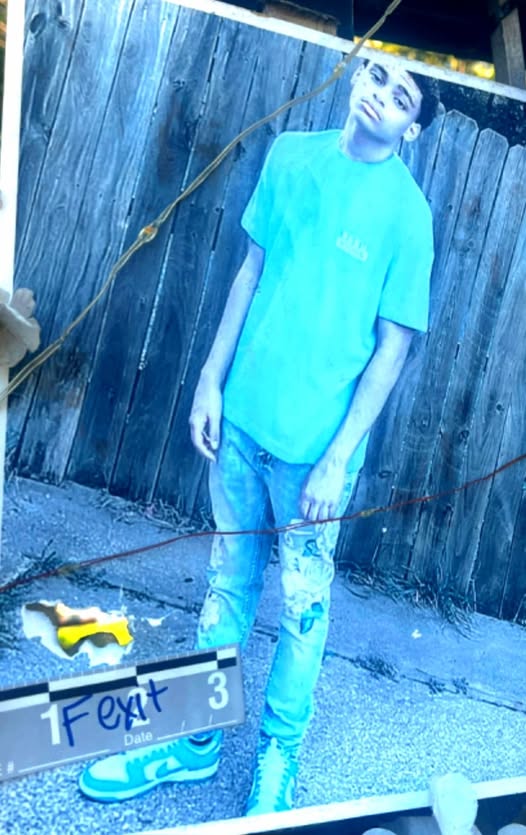In the early days of October 2025, Grand Rapids was shaken by the tragic news that a teenage life had been cut short. On October 4, the Grand Rapids Police Department (GRPD) responded to reports of gunfire on Umatilla Street Southeast. Upon arrival, first responders discovered a male adolescent suffering from apparent gunshot wounds. He was pronounced dead at the scene. After an autopsy, the youth was identified as 17-year-old Niles Murray. WWMT
A Community in Shock
News of Niles Murray’s death reverberated quickly across Grand Rapids. The sense of loss, grief, and outrage was palpable in neighborhoods, school halls, and churches alike. Citizens shared stories, lit candles in makeshift vigils, and called for justice. Many found themselves asking: how does a promising life end this way, and who is responsible?
For his family and friends, the pain is personal and profound. A 17-year-old holds a world of potential — school, dreams, relationships, future plans. His death is not just a statistic, but a void in the lives of people who knew and loved him. For the broader community, the shooting is yet another painful reminder of the gun violence that continues to afflict American cities.
Known Facts & Gaps
From public reporting, here is what is confirmed:
- The shooting occurred on or around October 4 on Umatilla Street Southeast, Grand Rapids. WWMT
- First responders were called after hearing gunshots; investigators later located Murray and efforts at lifesaving were unsuccessful. WWMT
- An autopsy confirmed the identity of the victim as Niles Murray. WWMT
- As of the latest reports, no arrests have been announced. The police continue to investigate, and officials are requesting that anyone with information come forward. WWMT
However, several key details remain unclear:
- The motive behind the shooting is not yet public.
- Investigators have not disclosed any suspect descriptions, witness statements, or forensic leads.
- It is not clear whether Murray was targeted, or if he was an innocent bystander.
- There is limited information about his background — school, family, recent activities, or associations.
This opacity heightens the community’s unease, because in the absence of clear answers, rumors and fear often fill the vacuum.
Police Response & Investigation
The Grand Rapids Police Department has stated the matter is an active homicide investigation. They have urged anyone who witnessed the incident or knows anything relevant to contact them at (616) 456-3380. WWMT
In investigations like this, standard procedures likely include:
- Crime Scene Processing: Preserving and processing evidence — shell casings, bullets, blood, footprints, surveillance video, etc.
- Witness Canvassing: Interviewing residents, passersby, or neighbors to gather accounts.
- Surveillance & Digital Evidence: Checking for CCTV or doorbell cameras in the area; examining phone records, social media, etc.
- Forensics: Ballistic analysis, DNA testing, gunshot residue, fingerprinting — anything to link a weapon or person to the crime.
- Suspect Profiling: Based on all collected evidence and intelligence, forming leads on possible suspects.
Given that no arrests have been made public yet, the investigation might still be in preliminary stages — or law enforcement may be withholding information to protect the integrity of the case.
The Ripple Effects: Fear, Voices, & Calls for Change
When a young life is lost in violence, the shockwaves extend far beyond the immediate circle:
- Fear & Insecurity: Neighbors and residents may feel less safe in their own streets, especially at night. Parents worry about their children walking to school, attending events, or simply being outdoors.
- Demand for Accountability: Community activists, local leaders, and clergy often push for transparency, accountability, and faster progress in such cases.
- Youth Impact: Teenagers and young adults may feel a mix of grief, anger, and vulnerability as they confront how violence can reach so close to home.
- Media & Public Pressure: Local media coverage amplifies the case, potentially putting pressure on law enforcement to act swiftly and publicly.
- Policy Conversations: Incidents like this often reignite debates over gun control, policing strategies, community investment, youth outreach, and violence prevention efforts.
Pathways Toward Healing & Prevention
While no singular solution can erase the pain of this loss, there are multiple approaches communities often take to mitigate future tragedies:
- Support for the Victim’s Family
Grief counseling, memorial funds or scholarships in Murray’s name, and community support to help them through the emotional and financial aftermath. - Community Healing Events
Vigils, prayer services, neighborhood gatherings, or art/music as a way to collectively mourn, build solidarity, and resist despair. - Youth Engagement & Alternatives
Offering safe spaces, mentoring programs, afterschool activities, and conflict-resolution training to divert youth from violent environments. - Community-Police Partnerships
Encouraging relationship-building between law enforcement and local residents, fostering trust, transparency, and cooperation in crime prevention. - Policy & Advocacy
Advocating for stricter gun regulation, safer neighborhoods planning, investments in social services, and robust violence-prevention strategies.
A Plea for Witnesses & Accountability
At this moment, one of the most crucial roles lies with the public: witnesses and those with information. Often, the smallest detail — a time, a vehicle, a face in a crowd — can break a case wide open. Grand Rapids residents are being asked to step forward, however small their knowledge might seem.
For the sake of justice for Niles Murray, for his family, and for a city seeking to heal, it is imperative that this case not go cold.

Leave a Reply